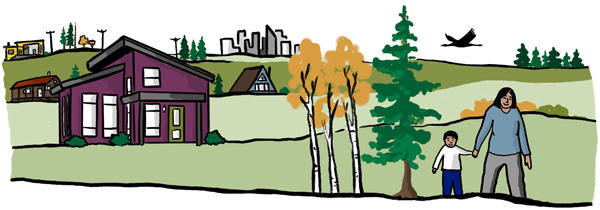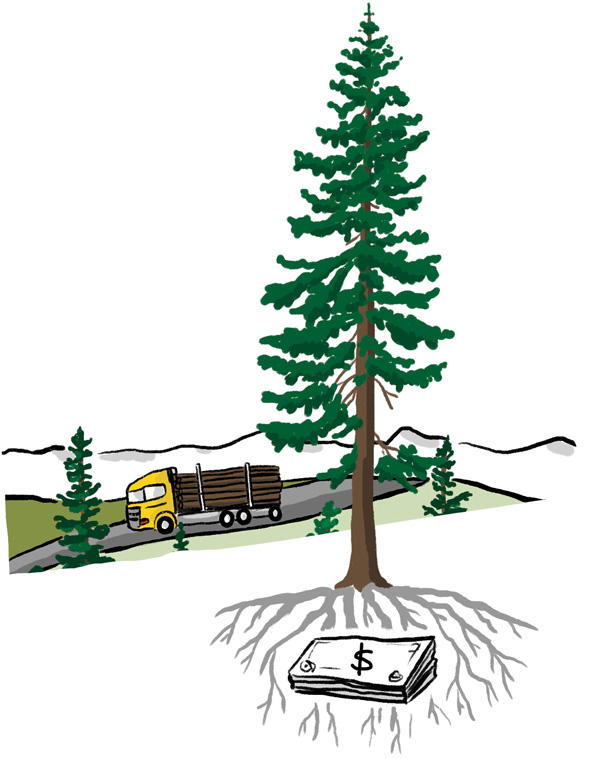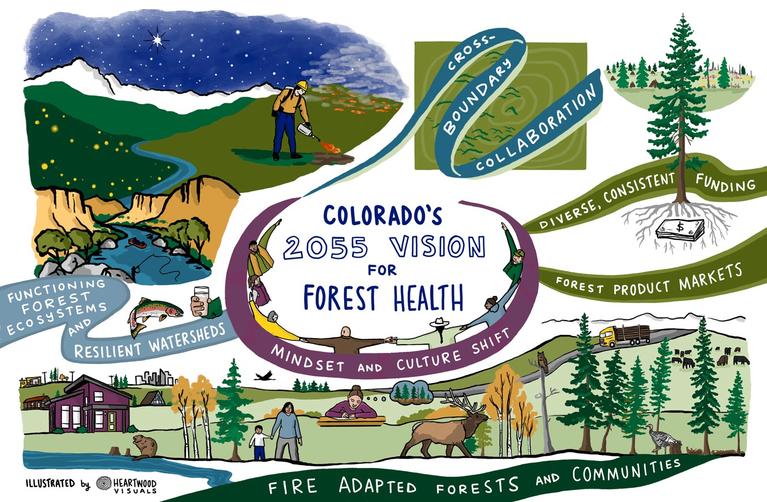Colorado's 2055 Vision for Forest Health
Overview
Colorado forest health manifests as functioning forest ecosystems, resilient watersheds, landscapes and communities adapted to fire through a mindset and culture shift, cross-boundary collaboration, and diverse and consistent funding, including forest product markets.
Mindset and Culture Shift

Understanding and appreciating forest ecosystems is grounded in lifelong learning, often rooted in forest experiences. Coloradans and visitors embrace active stewardship roles as they live in and enjoy our dynamic, ever-changing forests. We support forest management, nurture resilient communities, and coexist with fire.
Colorado leads the nation in stewarding our forests for long-term forest health and the diverse services forests provide, including clean water, habitat, carbon storage, forest products, and sustainable recreation opportunities.
Functioning Forest Ecosystems and Resilient Watersheds
Colorado's healthy forests represent a colorful Colorado with glistening snow-packed peaks, golden aspens, vibrant green growth, striking wildflowers, and clear streams.
Land managers recognize the complex and dynamic nature of forest ecosystems, tailoring approaches to ecological needs, elevating the role of natural processes, and continually evaluating and improving management strategies based on evolving science. The resulting forests are a mosaic of growth and disturbance with a range of tree species, ages, and sizes and native understories that provide vibrant habitats supporting abundant wildlife signaled by bugling elk, singing birds, and jumping fish.

Forests continue to serve as Colorado's largest natural filter and reservoir, recognized as the primary water source for the American West. As the snowpack in high-elevation forests slowly melts, it is filtered through soils, recharging groundwater, filling reservoirs, and flowing downstream to farms, ranches, cities and industrial users. Strategic forest and watershed management create thriving, biodiverse forests, watersheds, and riparian corridors that are resilient to changing climate conditions and disturbances (wildfire, post-fire flooding, forest insects, and diseases). These healthy landscapes support clean air, reliable, high-quality water, and safe communities while sustaining the state's natural beauty and economic vitality.
Fire Adapted Forests and Communities

Innovative, proactive, and holistic approaches to fuels management, forest health activities, and development enable communities and infrastructure to experience wildfires without devastation or disproportionate impacts, reducing forest-type conversion and supporting active forest regeneration. Wildfires burn within preplanned perimeters among a mosaic of forest treatments, natural and maintained fuel breaks, and past fire footprints. Strategic approaches to fuel reduction combine hand and mechanical thinning, grazing, and safe and effective use of fire. As a result, Colorado experiences fewer days of extreme smoke, with favorable winds dispersing light smoke and fire managers restoring the ecological role of fire safely.
Through voluntary and regulatory approaches to fire-safe construction, development and vegetation management, buildings and infrastructure seldom ignite from flames or burning embers. Utilities have upgraded and hardened infrastructure to prevent ignitions and substantially maintain and restore service during passing wildfires. When fires outpace forest and community readiness, rapid response and ample recovery resources, including climate-adapted seeds and seedlings and cross-boundary analysis, usher swift rehabilitation and reforestation.
Cross-Boundary Collaboration
Diverse partners, including those beyond the forestry sector, address forest health needs across scales and administrative boundaries through coordinated, adaptive management and collaborative decision-making. This collaborative, shared stewardship approach ensures that work happens where needed, regardless of jurisdiction.
Efficient environmental planning enables nimble implementation in Colorado's publicly managed forests. State, federal, and community programs actively and equitably support healthy forests and fire-adapted communities by creating a culture of collaboration, removing internal agency barriers, building capacity, and sharing resources.

Diverse, Consistent Funding and Forest Product Markets

Stable and diverse baseline funding and a mix of revenue streams sustain forest collaborative groups and enable efficient and effective progress on local forest management priorities. Coordinated funding and mixed revenue streams leverage carbon and innovative markets, the beneficiaries of the many ecosystem services provided by Colorado's healthy forests, and the avoided costs realized by prepared communities.
Diverse and innovative forest product industries and the associated workforce facilitate active, sustainable forest management and have rebounded as indispensable base industries. Local markets and wood processing facilities throughout the state provide outlets to utilize forest fuels as carbon-smart alternatives for construction, heating, manufacturing, and more while offsetting treatment costs.
